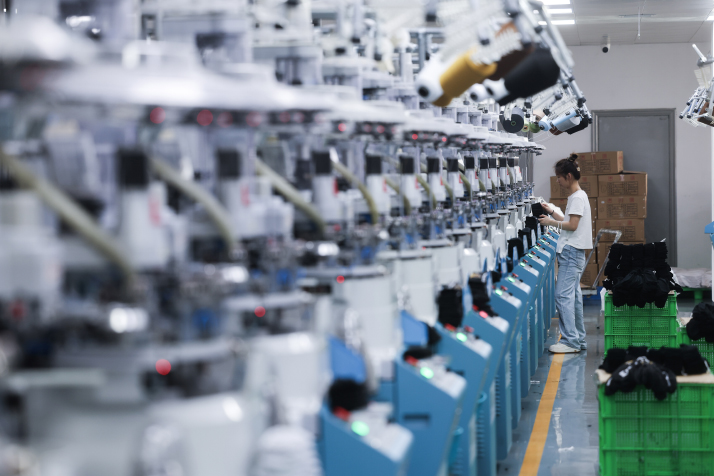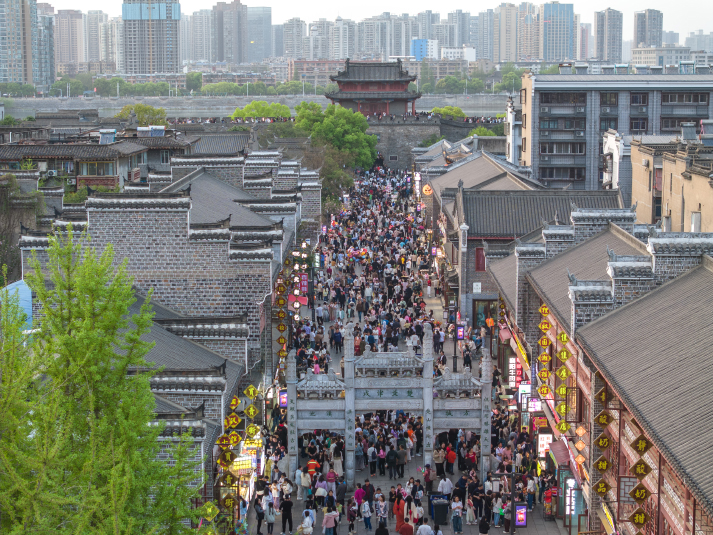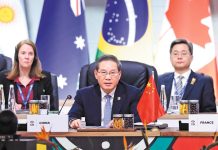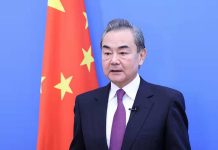The annual China International Consumer Products Expo (CICPE) is the largest consumer expo in the Asia-Pacific region. Held in Haikou, capital of Hainan Province, on April 13-18, the 2025 CICPE again showcased China’s dynamic consumer landscape. Over 1,700 companies and 4,100 brands from more than 70 countries and regions participated in the expo, the largest participation since its first edition in 2021. The event also attracted over 60,000 professional buyers, a more than 10-percent increase compared to the fourth edition last year.
Amid external volatility, China is looking to rebalance its economic drivers by stimulating domestic demand to sustain stable growth. Xu Hongcai, Deputy Director of the Economic Policy Commission at the China Association of Policy Science, told Beijing Review that China’s economic performance in the first quarter of 2025 was strong, reflecting the positive results of incremental pro-growth policies implemented late last year. But external uncertainties may cause short-term fluctuations in the months to come.
“The U.S. tariff abuse has created ripple effects of destabilizing the global political and economic order. China needs to mitigate these impacts by consolidating domestic economic growth and improving regional trade cooperation,” Xu said.
Buying big
Global consumer brands are doubling down on China’s consumer market. For the fifth straight year, French beauty giant L’Oréal Groupe, the world’s top beauty company by revenue, took part in this year’s CICPE, introducing its experiential and customized beauty solutions to further align with Chinese consumer demand.
Having operated in China for 28 years, L’Oréal has positioned Hainan, a free trade port and home to the world’s biggest duty-free shopping complex, as a pivotal hub in its travel retail strategy. The beauty titan is also building its second smart operation center in China in Jiangsu Province.
The company projected that by 2030, 150 million new middle-income consumers in China will enter the beauty market.
Luxury brands are also continuing to explore the Chinese market. In March, U.S. luxury jeweler Tiffany & Co. opened its newly refurbished triplex flagship store in Chengdu, capital city of Sichuan Province, its first in the country. This retail outlet houses the only Tiffany watch salon in China.
Beyond physical goods, consumption of services in sectors such as low-altitude aviation, the silver economy and healthcare are increasingly driving consumption growth in China.
The country’s per-capita service consumption expenditure rose 7.4 percent in 2024 compared to the previous year, contributing 63 percent to the overall growth in per-capita consumption expenditure, according to official statistics.

China is adapting to an aging population by developing its silver economy, which comprises all economic activities generated by individuals aged 50 and above, and particularly seniors (aged 65 and above). This includes elderly care services, senior-friendly smart technologies and senior-oriented tourism, all of which create new economic opportunities nationwide.
A report released by the China Association of Social Welfare and Senior Service in late December 2024 stated the silver economy accounted for 7 trillion yuan ($960 billion), roughly 6 percent of the country’s GDP, at the time.
That number is projected to reach 30 trillion yuan ($4.1 trillion) by 2035, and account for up to 10 percent of GDP, the report said.
China has tailwinds to expand service consumption, driven by the unlocking of market potential, upgrading consumption structure and accelerating industry development, Minister of Commerce Wang Wentao wrote in a signed article recently published in Qiushi Journal, the flagship magazine of the Communist Party of China (CPC) Central Committee.
Bringing benefits
Tapping into the domestic market is not about draining people’s wallets—it is about enhancing their purchasing power. The Chinese authorities have prioritized income growth through pro-employment policies and improving pension systems, with a specific focus on supporting the more vulnerable low- and middle-income groups.
Growing application of new technologies is empowering rural areas that are home to a majority
of the country’s low-income households. In Guizhou Province, big data is bridging the urban-rural divide by digitizing agriculture. Despite its mountainous terrain covering 92.5 percent of the province, which subsequently has limited traditional agriculture, Guizhou has emerged as China’s pioneering big data hub.
Xiuwen County in Guizhou, one of China’s key kiwi-producing regions, has embraced digital farming on a large scale. Local kiwi vineyards are linked to a big data platform via the Internet of Things (IoT). By equipping their smartphones with IoT sensors, farmers can monitor temperature, insects and soil moisture in vineyards. This allows them to optimize pruning and fertilizer approach, reducing their work time while improving yields.
The smart vineyards produce an annual output worth 6 million yuan ($823,300), with the technology boosting revenue by 130 yuan ($17.8) per hectare, according to the local government.
Employment challenges remain to be tackled. In March, Chinese authorities unveiled a policy package to boost employment and support startups through subsidies—and other means. The Ministry of Human Resources and Social Security said a record 12.22 million college graduates are expected to enter the job market this year.

The plan also emphasized the need to expand employment in advanced industries like the low-altitude economy (economic activity below 1,000 meters centered on manned and unmanned aerial vehicles), encourage the creation of new jobs through AI and improve employment in elderly care, childcare and overall healthcare services.
To stabilize the housing market, local governments across China have adopted new measures since the beginning of this year, including lowering purchasing thresholds and reducing taxes on home trade-ins.
Local authorities have also purchased unsold commercial homes for conversion into affordable housing to improve housing accessibility. The
government of Zhengzhou, capital of Henan Province, for example, has launched a program catering to young professionals seeking affordable and convenient housing, which is managed by state-owned real estate company Zhengzhou Chengfa Anju Co. The fully furnished units are equipped with amenities like gyms and shared spaces.
So far, the initiative has provided 56,000 units, housing over 60,000 people, with plans to expand to 100,000 units by 2026. Similar programs have been launched in at least 10 other cities nationwide to absorb excess housing stock and ease price pressures in oversupplied markets.
Overcoming headwinds
On April 22, the International Monetary Fund lowered its global growth forecast for 2025 from 3.3 percent to 2.8 percent, saying the tariffs announced by the United States and its trading partners were “a major negative shock to growth.”
With the new round of U.S. tariff hikes starting from early April, export-oriented firms in China are seeking export-to-domestic sales transitions or aim to diversify their markets.
Shen Jianguang, chief economist of JD Digits, the digital and finance arm of Chinese e-commerce giant JD.com, said in an interview with newspaper Shanghai Securities News that China’s market size in some consumer goods sectors has already surpassed that of the U.S. Today, annual car sales in China reach 31 million units, compared to about 16 million in the U.S.
Products originally targeting the U.S. market are similarly embraced by domestic buyers, especially in small cities and counties where there is vast potential, Shen said.
According to Xu, the U.S. tariff hikes suggest its goal to address long-standing challenges, including international payment imbalances, fiscal deficits and the hollowing-out of industries. But the U.S.-triggered trade war has disrupted global supply chains and will only weaken the global economy in the coming years.
“Its impacts should not be underestimated, and that especially goes for export hub provinces like Guangdong and Zhejiang. The pressure facing export-oriented enterprises, mostly private ones, may lead to unemployment, and the negative impacts are expected to become most apparent in the second and third quarters of this year,” Xu warned.
The Political Bureau of the CPC Central Committee held a meeting on April 25 on the current economic work, stressing the need to stimulate consumption and stabilize foreign trade.
The government’s efforts will focus on improving incomes for low- and middle-income groups, ensuring employment, fostering hi-tech industries and expanding market access, especially in the service sector, the meeting said.
Domestic demand still holds untapped opportunities. According to Xu, export-oriented companies need to diversify their markets and government subsidies should be in place to back up the firms.
Currently, the exports of goods and services account for approximately one third of China’s total retail sales. In the coming years, efforts should be made to see that exports make up only one fourth of total retail sales, with the remaining three fourths driven by domestic market demand, he said.
Xu also called for increasing the use of the Chinese yuan currency in international trade and investment and strengthening regional ties including cooperation under the Regional Comprehensive Economic Partnership (RCEP). The RCEP is a free trade pact comprising the 10 ASEAN member states and five of their major trading partners, namely, China, Japan, the Republic of Korea, Australia and New Zealand.
To increase the contribution of consumption in GDP growth, Xu suggested China focus on raising household income to double its middle-income group from 400 million to 800 million within a decade.
“The government also needs to further address urban-rural divide, up investment in urban renewal and transfer state capital to social security funds to improve pensions for those in need,” Xu said. –The Daily Mail-Beijing Review news exchange item






